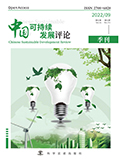

为减缓气候变化和全球变暖, 平衡能源消耗和碳排放之间的关系, 中国提出“双碳”目标, 将推动户用光伏建设作为重要的发展环节。分布式光伏具有建设成本偏高、成本回收周期偏长等显著特点, 是制约规模化推广的不利因素, 在发展初期长期依赖国家财政补贴。在高额补贴的激励下, 中国分布式光伏产业规模迅速扩大, 保持了多年的高速发展趋势, 但规模化发展伴随的是政府补贴资金的激增, 高额的补贴资金难以持续, 分布式光伏产业面临补贴退坡的总体趋势。本文以全国首批整县 (市、区) 屋顶分布式光伏开发试点区———北京市顺义区为例, 采取问卷调研、实地访谈、模型分析等途径, 揭示了该地区户用光伏发展面临的困境, 识别了该地区光伏发展的主要制约因素和存在的问题, 并对各类因素的影响程度进行了定量分析。在此基础上, 基于“合作治理”的理论视角, 尝试构建了涵盖政府、公众、市场、社会等多主体的户用分布式光伏发展G-P-M-S激励体系, 凝练出统筹“跨层级”“跨部门”“跨主体”“政策工具整合”的政策导向, 并结合顺义区实际提出了具体的相关政策建议, 以便为顺义区推动光伏产业发展、实现绿色低碳转型提供支撑。
In order to mitigate climate change and global warming, and to balance the relationship between energy consumption and carbon emissions, China has put forward the “double carbon” goal, which will promote the construction of household photovoltaic as an important part of development. Distributed photovoltaic has the characteristics of high construction cost and long cost recovery cycle, which are unfavorable factors restricting large-scale promotion. and has been relying on national financial subsidies for a long time in the early stage of development. Under the incentive of high subsidies, the scale of Chinas distributed photovoltaic industry has expanded rapidly and maintained a high-speed development trend for many years. However, the large-scale development is accompanied by a surge in government subsidy funds. The high subsidy funds are difficult to be sustained, and the distributed photovoltaic industry is facing the overall trend of subsidy decline. This paper takes Shunyi District of Beijing, the first batch of pilot areas for rooftop distributed photovoltaic development in the whole county (city, district) in China, as an example. Through questionnaire survey, field interview and model analysis, this paper reveals the difficulties faced by household photovoltaic development in this area, identifies the main constraints and problems of photovoltaic development in this area, and quantitatively analyzes the influence degree of various factors. On this basis, based on the theoretical perspective of ‘cooperative governance’, this paper attempts to construct a G-P-M-S incentive system for household distributed photovoltaic development, which covers the government, public, market and society, and condenses the policy orientation of coordinating ‘cross-level’, ‘ cross-department’, ‘cross-subject’ and ‘policy tool integration’, and puts forward specific policy suggestions in light of the actual situation of Shunyi District, so as to provide support for Shunyi District to promote the development of photovoltaic industry and realize green and low-carbon transformation.